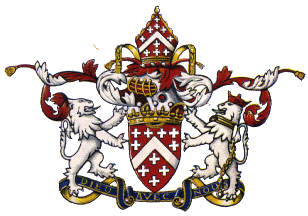|
|
 |
|
|
The Peerage - Earls
 Though a barony is the oldest peerage title proper, the word 'earl' has much older origins, being derived from the Anglo-Saxon magnate known as an ealdorman who was more of a local ruler than a legislator. The term itself comes ultimately from the word Yarl' - a powerful Viking noble, so that the title of earl has very ancient roots. Though a barony is the oldest peerage title proper, the word 'earl' has much older origins, being derived from the Anglo-Saxon magnate known as an ealdorman who was more of a local ruler than a legislator. The term itself comes ultimately from the word Yarl' - a powerful Viking noble, so that the title of earl has very ancient roots.
Although the oldest extant English earldom is that of Arundel (1433), it has long been merged with the Dukedom of Norfolk and the Earl of Shrewsbury is regarded as the premier Earl, his creation dating from 1442. The origin of the earldom of Mar, the premier earldom of Scotland is, according to an 18th century lawyer, 'lost in its antiquity'. Certainly there were Mormaers (earls) of Mar in the early 12th century and the present holder is the 31st. This earldom, like a number of other Scottish ones, passes through female lines and is at present held by a woman. It was long the custom for retiring Prime Ministers to be offered a peerage - usually an earldom. Churchill refused a peerage and Sir Harold Wilson accepted a life barony. For a time it looked as if hereditary peerages had been phased out but Mrs. Thatcher revived the custom and the late Harold Macmillan accepted the earldom of Stockton. Up to the seventeenth century an earl was invested by the Sovereign with a sword which was girded around his waist - hence 'a belted earl', a phrase beloved by Victorian novelists and others. An earl's coronet is heraldically depicted as having five silver balls on stalks alternating with four small gold strawberry leaves. The eldest son of an earl always bears one of his father's secondary titles by courtesy and other sons are 'Hons.'. Daughters are styled in the same way as the daughters of dukes and marquesses i.e. Lady Carolyn Howard is the daughter of the late Earl of Carlisle. |
© The O'Brien Clan Since 1997 |